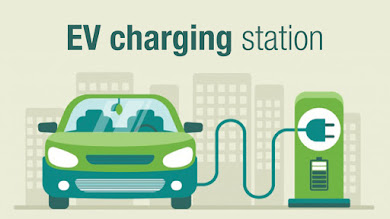lithium battery assembly machinery
Electric Vehicle Supply Equipment
Charging Equipment
The function of the charging equipment is to transmit the burden materials through the locks in the furnace to desired locations on the burden surface in the throat. For many years, the two-bell charging system with movable armor was the only proper charging equipment but nowadays the bell-less rotating chute is dominating. The advantages of the bell-less top is the more accurate filling of the furnace and better gas tightness with higher top pressures. The stock level is measured either with a mechanical stock rod or with a radar.
Inductive charging is defined as the transfer of energy from the supply network to the vehicle in an electromagnetic way, using a two-part transformer with the primary connected to the network and the secondary installed on the vehicle. Charging can be performed after juxtaposition of the two parts.
The introduction of inductive charging systems has been proposed to allow a considerable improvement of charging safety. The nonconductive energy transfer virtually eliminates all risk of electric shock for the user. Furthermore, the opportunity for automatic connection dispenses with the use of electric cables, thus removing both electrical (handling of power connectors) and mechanical (trailing cables) hazards which are usually associated with the use of electric vehicle charging equipment.
As unquestioned global leaders in Electric Vehicle Supply Equipment testing and certification, our engineers help you plan for market conformance and avoid delays. Drive your electric vehicle chargers and EV-related systems and components to market faster with integrated safety, performance and interoperability testing to all industry-recognized SAE, UL, IEC and EN standards, as well as local and regional regulatory requirements.
- On-Board Battery Chargers: SAE J2894, UL 2202, IEC 61851
- Charging Inlet: SAE J1772, UL 2251, CHAdeMO, IEC 62196
- Testing of electrical connectors LV 214
- Charging Station/Cordsets: SAE J2293, UL Subject 2594, IEC/EN 61851 series
- DC Quick Chargers: SAE J1772, UL 2202, CHAdeMO, IEC 61851
- Charging Plug: SAE J1772, UL 2251, CHAdeMO, IEC/EN 62196 series
- Personnel Protection Circuitry (CCID/RCD): UL 2231-1/-2, CSA 22.2#281.1/.2, IEC 61540, IEC 62752, IEC 61008, IEC 61009
Functional safety
- UL 1998, UL 991, IEC 61508
EMC
- FCC Part 15 verification class A, FCC Part 18
- EMC directive 2004/1008/EC, IEC/EN 61000-6 series
- Intentional radiators based on ETSI/EN standards
EVSE equipment is classified as Level 1 (120 volts AC), Level 2 (240 volts, AC), and DC Fast Charger (480 volts DC and higher).
EVSE infrastructure around the world by:?
- Including EVSE requirements in codes, rating systems, and Standards
- Advocating for unified industry positions on legislative and regulatory issues that are favorable to EV and EVSE adoption at local, state, and national levels
- Collaborating with EVSE sales channel partners, including contractors and installers, on such issues as training programs
- Aligning efforts with major stakeholders in the EV market, including auto manufacturers, electric utilities, and state and federal government regulatory agencies?


